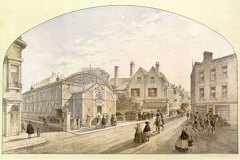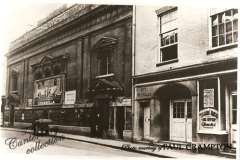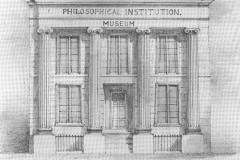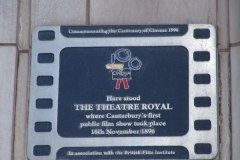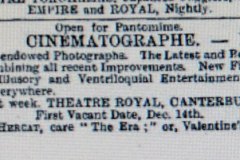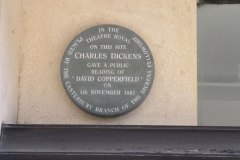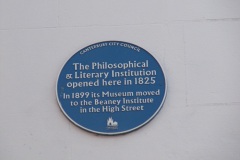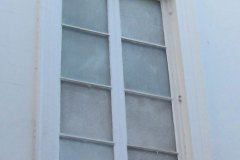Guildhall Street
The demise of the Orange Street theatre in 1859 left the city once again with no theatrical venue. A public meeting later that year opted for a ‘New Iron Theatre’ (Image 1), but this proposed imposing structure, intended for the city cattle market site in Upper Bridge Street, failed to attract sufficient finance. Thomas Sydney Cooper, by this time a successful local painter who had been invited to paint for Queen Victoria, was able to offer a solution. Using property he had already acquired in Guildhall Street, he designed the new Theatre Royal (Image 2) and made a substantial contribution to its cost. It opened in 1861, adjacent to an existing institution associated with Cooper, the Philosophical and Literary Institution opened in 1825 – he was a member and also donated exhibits (Image 3). So by the 1860s, Guildhall Street boasted three imposing buildings – the Guildhall itself, the Philosophical Institution and the new Theatre Royal. Two of these, the Institution and the theatre, were incorporated into the new retail establishment of Lefevres (later Debenhams) in the 1920s.
What to see:
- The first of three commemorative plaques along the south-west (Debenhams) side of Guildhall Street (Image 4), walking from the High Street end, marks the first public film showing in the city, held in the Theatre Royal in 1896. Those who attended enjoyed ‘Hercat’s life-endowed photographs’ (Image 5)
- A second plaque (Image 6) commemorates a reading of David Copperfield in Theatre Royal in 1861 by its author Charles Dickens
- The third plaque (Image 7) denotes the opening of the Philosophical and Literary Institution in 1825
- The nearby tapered windows (Image 8) are all that remain of this Institution – the Ionic columns were removed when the whole frontage became part of Le Fevres (now Debenhams)
- It seems plausible that the sweeping Debenhams staircase (Image 9) leading to their lingerie department formed part of the original Theatre Royal
A full account of Canterbury’s many theatres (all 16 of them!) is given in Manners (2011).
Sources: Brent (1860); Cantacuzino (1970); Crampton (2006); Hasted (1800); Manners (2011); Stewart (1983)
DL

